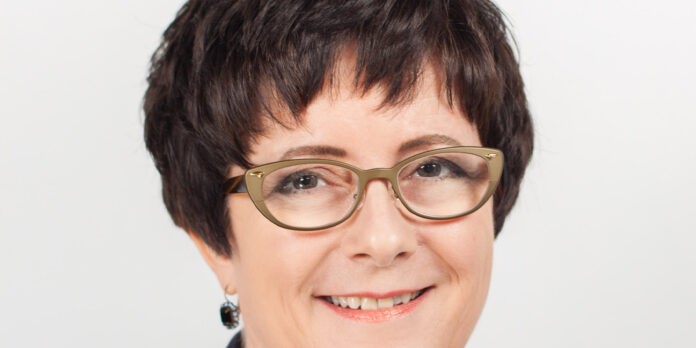
One of the strongest trends over the pandemic has been shifts in brand loyalty, with over 40% of consumers switching brands in one or more product categories. Here, Susan Cornish, President, Insight + Action, analyses the product attributes driving the trends.
Consumer surveys from many sources have shown that a growing percentage of consumers want ‘sustainable’ products, and are often willing to pay more for them. Another trend evident in consumer product categories like food, beverage, and tissue is the ‘premium-ization’ of brands, a strategy often used to enhance product differentiation and support higher pricing. In bath tissue, premium-ization has meant fast growth of the ultra-premium and super-premium brands. Incorporating recycled materials into new products improves sustainability, yet recycled fibre is rarely used in premium brands because it is more difficult to create softness, strength, and absorbency with shorter fibres. Environmental groups have made headlines in recent years by pointing out that many of the high market share bath tissue brands in the US have little or no recycled fibre content.
Historically, the North American AfH tissue sector has used higher levels of recovered fibre than other global regions, but usage is declining in North America. This trend has occurred over roughly the same timeframe as the expansion of premium bath tissue brands, and is likely to continue for a number of reasons.
The volume of Sorted Office Paper (SOP), the main recovered fibre feedstock for tissue, has been declining for some time as less paper is used in offices and other workplaces, and the decline has become more pronounced over the course of the pandemic. Limited supply has led to higher prices for the grade. Alternative types of virgin fibre such as eucalyptus (BEK) are readily available and can be competitively priced.
Another impact of the pandemic has been a major decline in demand for tissue in the AfH segment in which recovered fibre is far more important than in the At-Home (AH) market which has seen significant growth.
If consumers are seeking greater sustainability in products, how will the tissue sector respond if expanding the use of recovered fibre is not likely to be an alternative? This raises several questions in the bath tissue category: what percentage of the AH market is concerned about sustainability in tissue relative to the buyers of ultra- and super-premium brands; and what product attributes do consumers link to sustainable bath tissue?
Many new, niche tissue brands that identify as ‘sustainable’, ‘green’, or ‘eco-friendly’ have emerged in recent years, with expressive names such as The Cheeky Panda, Who Gives a Crap, Bim Bam Boo, Bambootiful, NooTrees, and others (many of the upstarts are based on bamboo fibre).
In order to address these questions, a short consumer survey was conducted with a US online panel in early 2020, and results have not been presented elsewhere due to the sudden market changes that followed. The survey sampled 300 nationally representative grocery shoppers who purchase bath tissue for their household, which implies an accuracy level of +/- 6%.
Despite the pre-pandemic timing of data collection, results are very consistent with more recent research in this sector conducted by McKinsey & Company*. Research questions included:
• What is the relative size of key market segments for bath tissue – Premium, Value, Private Label, and Green/Recycled – and why do consumers buy each segment?
• How important are recycled content and other ‘green’ attributes to consumers, relative to softness, strength, absorbency, and other traditional bath tissue characteristics?
• Do consumers know what their current bath tissue brand is made of and whether it has recycled fibre?
• Which sustainable tissue characteristics, such as recycled, unbleached, packaged in paper, are consumers most responsive to?
• Will consumers buy bath tissue made from alternative fibres such as bamboo, wheat straw, eucalyptus, or sugar cane/bagasse?
Segments in the bath tissue category
Respondents indicated which brands of bath tissue they had Ever Purchased as well as which individual brand they buy Most Often. Results for the two questions are very consistent and indicate that even ‘green’ brands that have been in the marketplace for many years (such as Seventh Generation, for example) have very low market share. Among brands Ever Purchased, Angel Soft is the leading brand, followed by Charmin Soft, Charmin Strong, and Scott 1000. Figure 1 (left side) shows the results for brands bought Most Often, a very similar lineup. Regular users of ‘green’ brands such as Whole Food’s 365 100% Recycled account for only 2% of the sample. Note that all of the ‘green’ brands reported in this research are based on recycled content, while none of the upstart brands noted above, with even smaller followings, were mentioned.
In Figure 1 (right side), each brand is allocated to one of four segments: Premium, Value, Private Label, and Green. For regular Most Often purchasers of bath tissue, Value brands dominate the market, followed by Premium brands. When considering the brands consumers have Ever Purchased, the Premium segment is larger than Value. In effect, Value brands dominate regular purchasing but consumers do try Premium brands from time to time.
As Lingqvist et al found in recent research, one of the strongest trends over the pandemic has been shifts in brand loyalty, with over 40% of consumers switching brands in one or more product categories. Given the shortages experienced in the bath tissue sector in 2020, we would expect considerably more switching in the tissue category. Value is the main driver for switching behaviour in tissue according to Lingqvist et al.
Which product attributes drive the category
Figure 2 indicates how important each of 16 tissue product attributes are to consumers. ‘Good value for money’, followed by ‘Roll lasts a long time’, lead reinforcing the importance of value in this category. Functional attributes like not clogging plumbing do matter, followed by soft, absorbent, and strong. Attributes that might be considered more sustainable, shown in green, are rated almost the opposite with around half (or more) indicating these features don’t really matter.
Breaking out the three larger segments in Figure 3 suggests different product attributes are important to each segment. Those who buy Premium tissue score ‘value for money’ low and ‘soft’ much higher. Value brand buyers are concerned about ‘value for money’ and functional attributes like ‘don’t clog’ and ‘good for septic’, but not ‘thick/plush/more plies’. Private Label buyers are similar to Value buyers.
Figure 4 shows how all consumers rate the six sustainable attributes, breaking out the very small group of regular Green brand buyers. This group, which may have grown in size since this research was done, trends younger (18-24 and 25-34) and values each of the sustainable attributes considerably higher than consumers overall.
How many would buy tissue with the six sustainable product attributes if it was offered “at a price point that works for you”? As Figure 5 shows, consumers are fairly open to considering bath tissue with sustainable features with around half indicating they “Probably/Definitely” would. Tissue made from sustainably managed forests is the most appealing; unbleached fibre of the least interest. Respondents with higher education and income are more likely to probably/definitely purchase. The fact that very few say they “Definitely/Probably Would Not” purchase and another 40% say they “Might or Might Not” suggests that consumers are not opposed to sustainable features in tissue; they may simply be unfamiliar with the concept.
Bath Tissue Composition & Alternative Fibres
When asked if their Most Often purchased brand is made of recycled fibre, half of consumers acknowledge that they really do not know, and another quarter say it is wholly or partially recycled – when we know that almost all the brands they mentioned are not made with recycled fibre. As shown in Figure 6, knowledge about the source of fibre in their Most Often brand is equally as limited with well over half indicating “No idea”.
When asked how likely they are to purchase bath tissue made from four alternatives fibres (bamboo, eucalyptus, wheat straw, and sugar cane/bagasse), the response shown in Figure 7 is a little less optimistic with around half indicating the “Might or Might Not” purchase. Willingness to try increases with higher education and income, and/or younger age groups, however there may be more resistance to new fibres than to other sustainable bath tissue features. Bamboo is most well-known, as shown by the new, upstart brands. Consumers’ open-ended comments on alternative fibres were not flattering.
Behaviour and attitudes toward sustainability
Figure 8 summarises the percentage who “Always/Often” engage in various environmentally-friendly behaviours. Overall, the strongest areas of participation are using refillable containers for beverages when AfH, recycling at home, and repairing instead of replacing. The small number of Green brand buyers score similarly on the first two of these measures.
Overall, one third or less “Choose products with less plastic…”, “Take public transit, bicycle…”, use a “Drop-off recycling centre”, or “Compost leftover food waste” but the Green segment score substantially higher on these and all these other behaviors. Those who regularly buy ‘green’, recycled bath tissue are first, a very small market segment (even allowing for some growth since 2019), and second, very active in all types of sustainable activities.
The importance of 15 sustainability issues to tissue buyers is profiled in Figure 9. It is interesting to note that three of the top five highest scoring items are things “companies should be” doing regarding packaging. “Companies” should be reducing the amount of packaging, replacing plastic with more environmentally friendly packaging, and using recycled plastic. Consistent with other surveys, consumers feel that paper packaging is better for the environment than plastic, and like to buy packaging made of recycled material.
Only four out of 10 agree their “knowledge of what can be recycled is good”, they are an “environmentally aware consumer”, or they “know which kinds of plastic can be recycled”, while a mere three out of 10 seek out information on the recyclability of products and packaging.
Given a fairly low level of consumer knowledge about recycling and a perception that companies should be making the changes, will consumes pay more for sustainable products/packaging? Figure 10 shows that responses are fairly consistent regardless of the type of product or packaging in question. Just under half would not pay more while one fifth would pay 10-20% more, particularly those in younger age groups.
Summary
The research reviewed here shows that the majority of consumers know very little about their bath tissue, both in terms of what the fibre is and whether it is made from recycled fibre. They are generally not that interested in tissue made from alternative fibres and probably have little knowledge of this option.
There is evidence that Value brands are the main drivers in the category although traditional premium product features such as soft, strong, and absorbent are still important. Sustainable attributes such as ‘from sustainably managed forests’, ‘made from recycled’, ‘packaged in paper not plastic’ rank very low on the list of features important in bath tissue for the majority of buyers.
A very small segment that skews younger regularly purchase ‘green’ brands of tissue (in this study, all recycled content brands). This group values sustainable attributes far more than other segments, and engages in ‘green’ behaviours on a much more
frequent basis.
The lack of interest in ‘green’ product features is consistent with attitudes to broader sustainability concerns. Many feel companies should be doing more to make packaging more sustainable while they report knowing little about recycling or what it takes to be an environmentally aware consumer, and very few search out information on such topics.
Yet when asked if they would buy tissue with sustainable characteristics, half indicate they Probably/Definitely Would and most of the remainder would at least consider it. Consumers appear to be relatively open to considering bath tissue with sustainable features, despite low knowledge and interest on many sustainability characteristics.
Implications
As many other studies have shown, consumer interest in greater sustainability in products and packaging continues to grow. There are many options for bath tissue producers to show improved sustainability, and this study suggests several. For example, linking a brand to the benefits of ‘sustainably managed forests’ or products made with ‘sustainable, renewable practices’ may be a stronger driver for consumers than some other ‘green’ attributes.
Product innovations that resonate with some consumers may become more meaningful with time, such as replacing plastic wrap with paper; producing tissue rolls with no core/tube; or using unbleached fibre. More focused consumer research would suggest which changes would generate the widest support in the market and the type of messaging that would be optimal to educate consumers (and environmental groups).
Considering the overall tissue production life-cycle, there are many additional opportunities for which improvements and achievement of sustainability goals could be communicated to consumers to improve perceptions of sustainability:
• Water is a key ingredient to tissue production with the potential to be used more efficiently in many locations;
• Carbon emissions can always be improved, and at least one study shows that US mills have higher emissions than elsewhere globally;
• Similarly, a better understanding of the sustainability balance involved in using the various alternative fibres could be communicated more widely.
*Lingqyist, Nordigarden, Roeper, & Vainberg, “Beyond Covid-19: The new consumer behaviour is sticking in the tissue industry”, McKinsey & Company, October 2019.











































